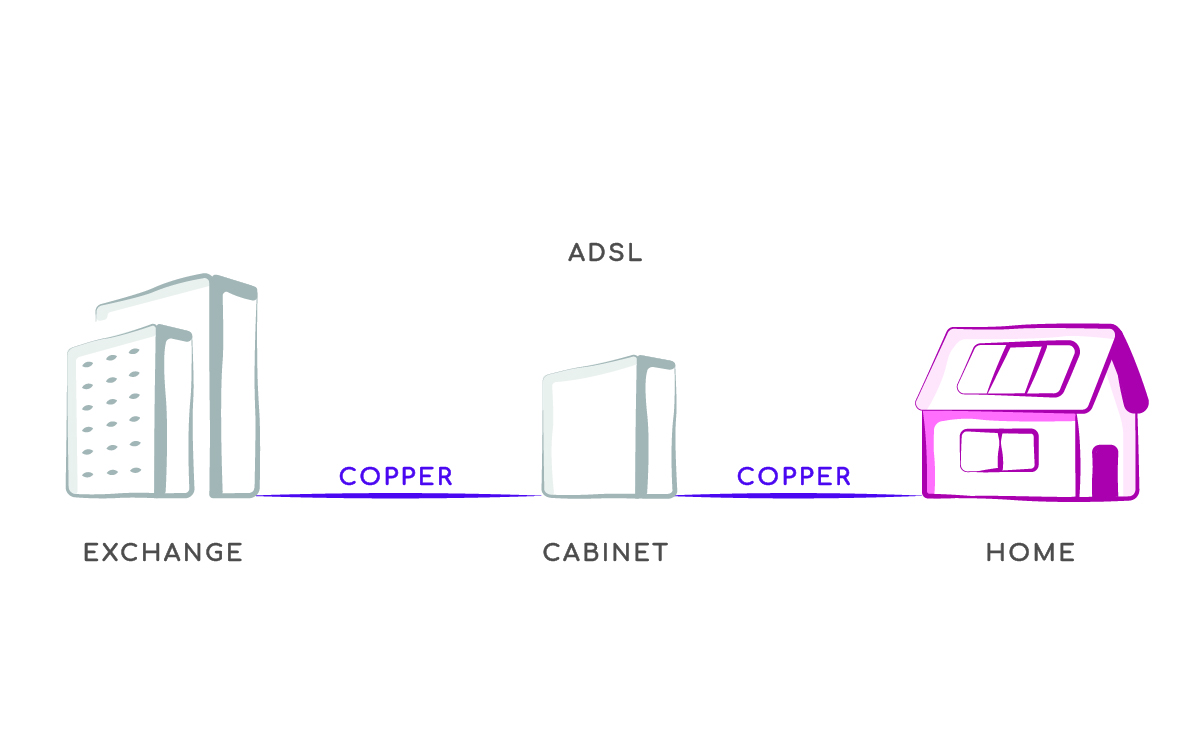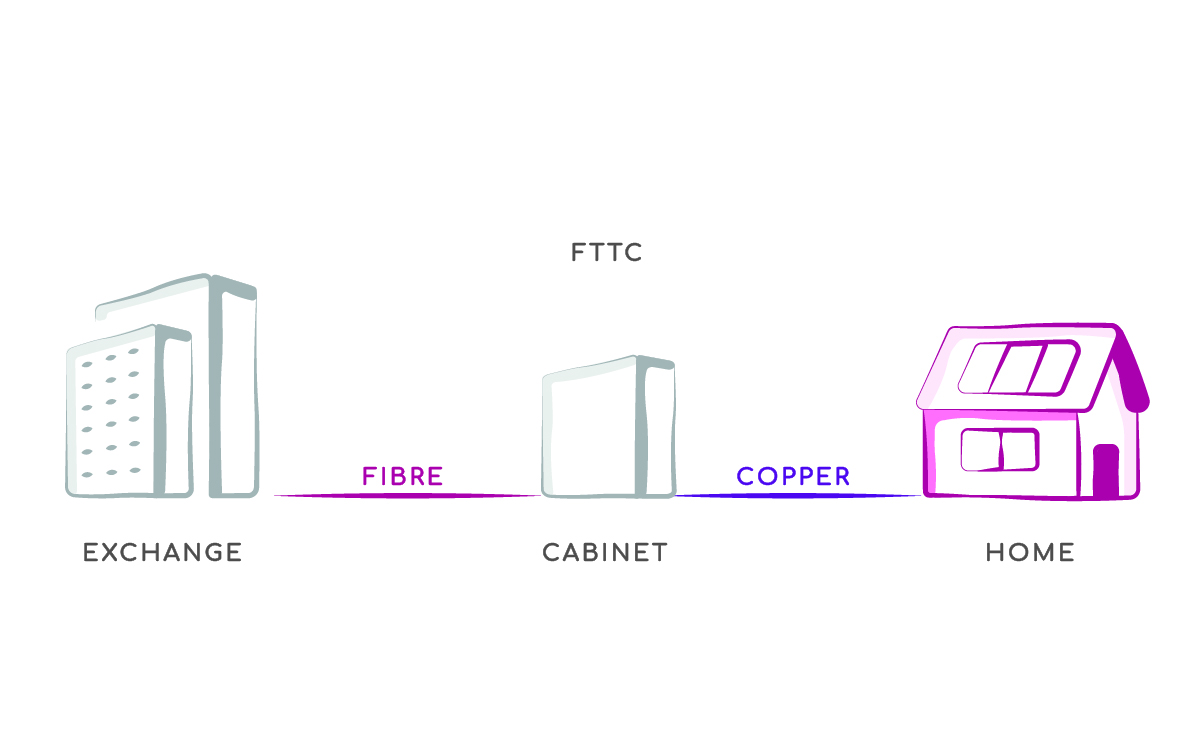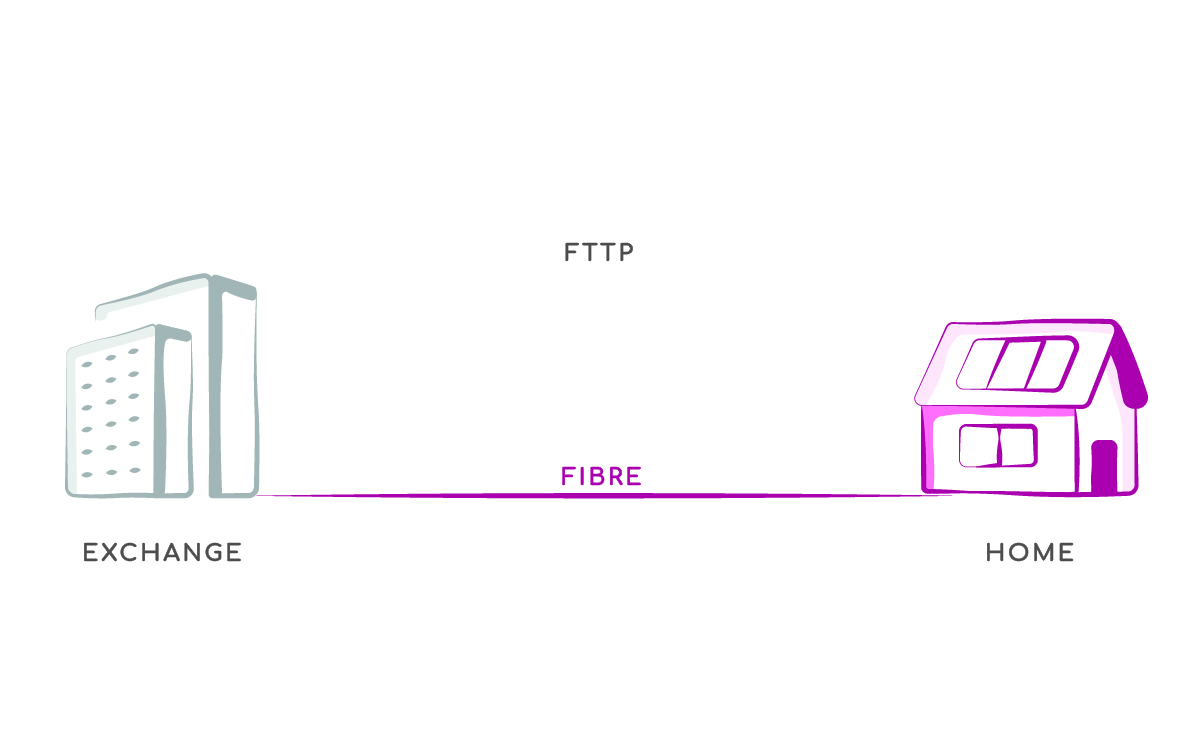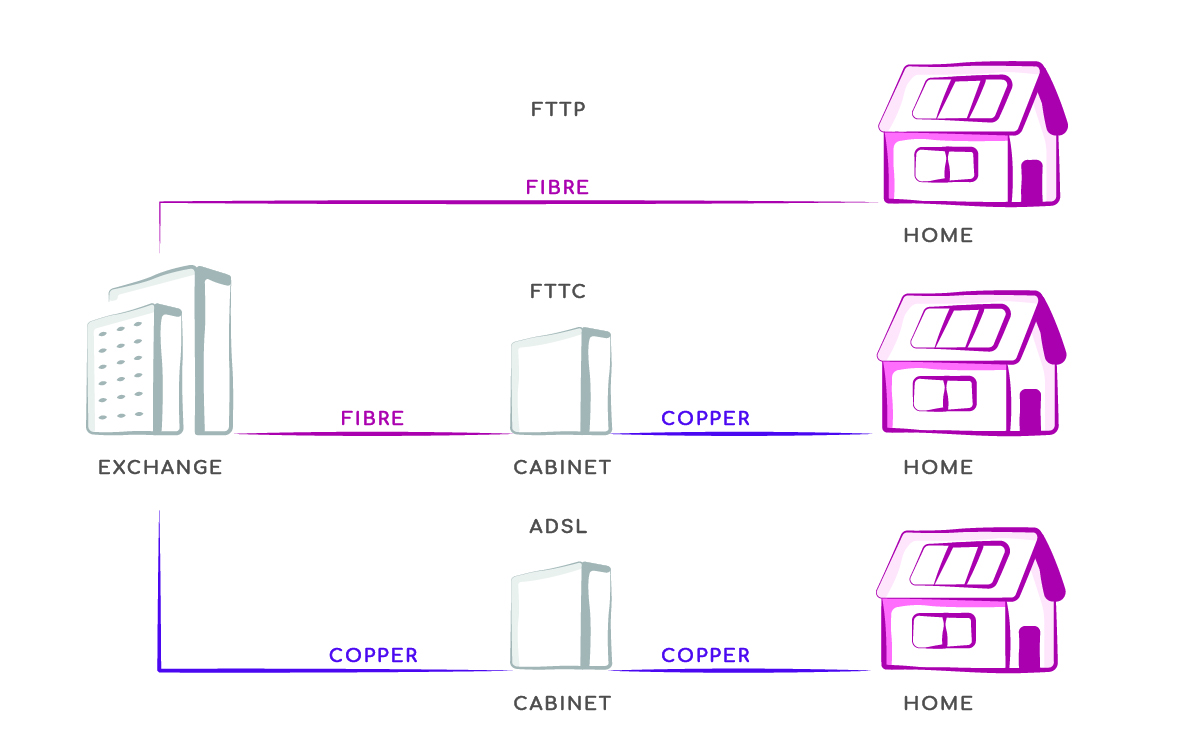

The world has become more connected over recent years, with everything from your fridge to your lights being connected to the Internet. Not only that, but more and more of us are working from home and we’re using our broadband to do more wonderful things than ever before such as streaming videos, online gaming, video calls with loved ones and many more. This increase of devices and uses has meant more speed and greater reliability is needed in both homes and offices to allow everything to continue to run smoothly. This is similar to the evolution of our roads over the last 100 years. As the number and types of cars increased, single lane roads were no longer fit for purpose, so dual carriageways and then motorways were constructed to allow the higher volume of cars to run smoothly.
That being said, you may be a touch confused as to what fibre broadband actually is, partly because the big telecoms companies have been misleading consumers for years by labelling ‘part-fibre’ or ‘FTTC’ as “fibre” (which they’re not allowed to do since an Ofcom ruling in late 2023). So let’s see if we can help clear things up a bit and show why full fibre broadband is the no-brainer choice (if you can get it).


Before the Internet, our homes and businesses were connected to the phone network with copper-cable phone lines. It worked by connecting our properties to a small green or brown cabinet in the street, which then connected back to a local exchange (a big ugly building near the centre of your town or village) and from there, onto the national network. When the Internet started in the 1990’s, these copper cables were then adapted to carry Internet traffic as well as our voice calls by converting ‘digital signals’ into electrical analogue signals. With this type of broadband, people could only expect speeds of around 8-10mbps.

There’s a couple of key issues with these copper cables;
The bandwidth of analogue signals over copper are very limited – meaning they’re not suited to modern speed needs like streaming 4K video.

In 2009, in order to improve the stability and speed of connections, Openreach (the main national network provider and owned by BT) began upgrading the copper cable that connected the exchange to the cabinet in your street, to fibre optic. This increased speeds to around 70mbps, but didn’t completely solve the issues because copper still remained in the chain. FTTC is not as fast or reliable as full fibre broadband but has almost blanket coverage in the UK, making it very accessible and cheap.

Since the copper cables are the weak link in the FTTC chain, the next step was to move towards fibre optic being the end-to-end “pipe” to carry our internet traffic and so “’fibre to the premises” or ‘full fibre’ broadband was born. With full fibre, you get fibre optic cables directly from the exchange to your property, without any copper involved, meaning you get a significantly more stable, reliable and faster connection. In 2024, full fibre broadband can easily reach speeds up to and exceeding 1,000mbps (about 100x faster than copper or 15x faster than FTTC) – while that might be a bit excessive for the average home today, it makes things futureproof for the new devices and uses that will come in the years ahead.
It stands for ‘fibre to the home’ – it’s the same thing as FTTP or full fibre broadband, it’s just another confusing term.
Full fibre broadband is significantly faster and more reliable than previous forms of connection. Fibre optic cables are essentially thin glass cylinders, which offers benefits over copper cables such as;
Glass transmits data at the speed of light, meaning far higher bandwidth (faster download/ upload speeds) for your devices now and into the future

Glass is much more resistant to degradation due to the weather and doesn’t get the same signal loss over long distances, meaning a more stable connection for decades to come and regardless of how far you are from the exchange.
Fibre optic cables are immune to electromagnetic interference, which can be a problem with copper cables, ensuring a more stable and reliable internet connection
The result is an incredibly stable, high-speed connection that can handle anything you throw at it; a bit like upgrading a single lane road to a 3-lane motorway. Now that people are working from home more, and we consume more services over the internet, we depend and rely heavily on these connections more than ever before – you could say, full fibre broadband is essential for modern life.
Whilst all this sounds dazzling, and anyone in an office or busy household should be chomping at the bit to get themselves full fibre broadband, sadly, the infrastructure is simply not available to everyone just yet. Infrastructure providers are working night and day to expand this coverage and by the end of 2026, the target from Openreach is to have 25 million homes (about 90%) connected to full fibre broadband, up from around 14 million today. But if you can get full fibre to your home or business, you absolutely should jump on it.

At Carnival Internet, we believe in delivering the best possible experience to our customers, which is why we only sell full fibre broadband. Head over to our home page to check what you can get; if you can’t get full fibre yet, you can always register your interest and we’ll let you know as soon as its available for you to join our growing community.
Contact us